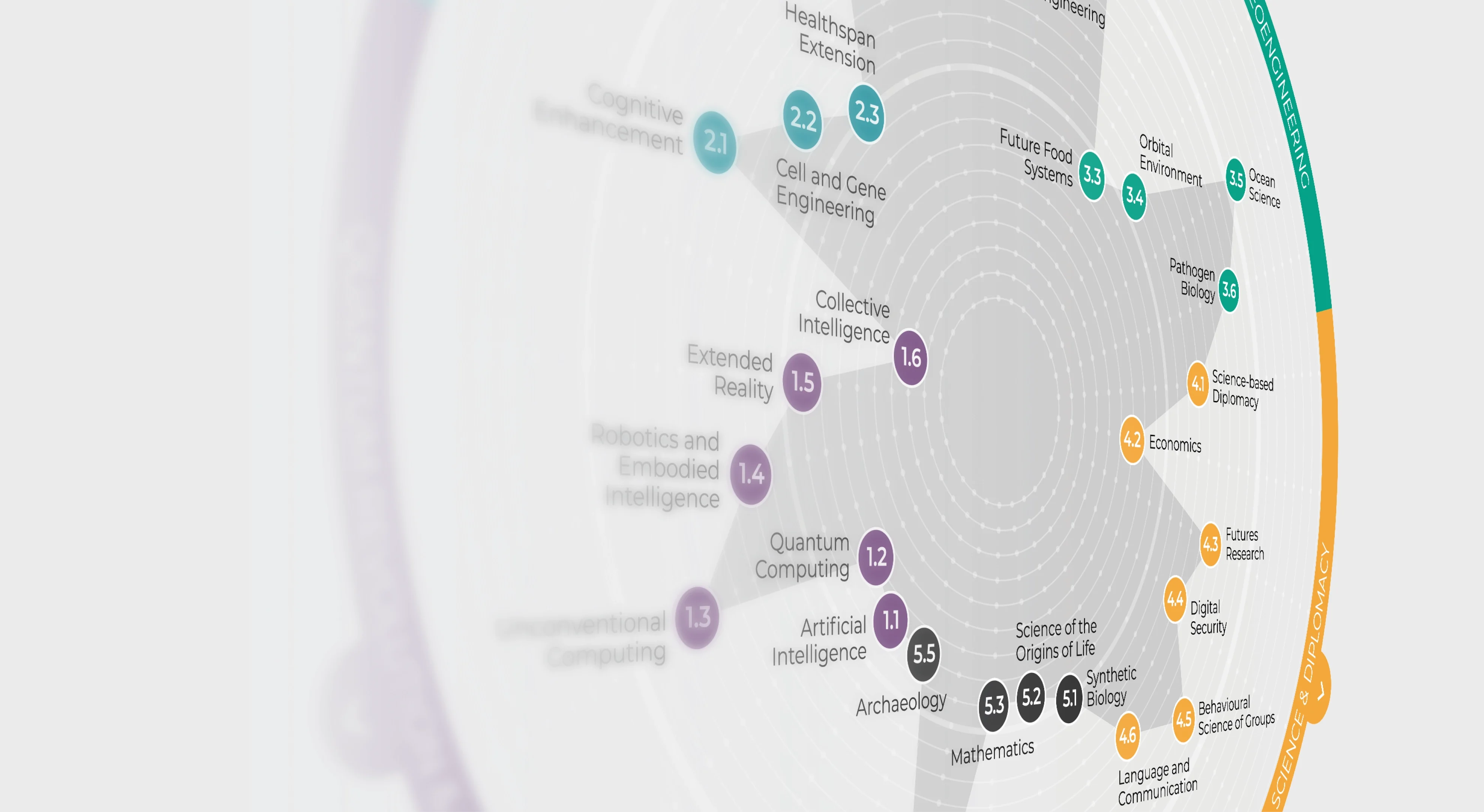“Science and technology developments rarely occur suddenly, or in isolation. Rather, they are the result of a multi-year, or more often multi-decade, endeavour by science and research communities around the globe. As such, the imaginings and aspirations of these communities, and the multiple goals that they are striving towards, provide a vital glimpse into the possible futures that may one day come to pass.” Introductory essay: GESDA’s approach to science anticipation (Radar 2026)
At a glance
The main Radar graphic, designed as a radial graph or “star”, indicates how important researchers believe it to be for society to anticipate future developments in each area. This measure of importance is termed the “Anticipation Potential” of each topic.
The further out from the centre of the graph the topic sits, or the longer the point of the “star”, the more importance researchers in the field place on anticipating future developments now.
Going deeper
To find out more about specific anticipated breakthroughs that scientists and researchers have identified within each research domain, each “dot” on the Radar is accompanied by a scientific brief.
This brief is divided into the four main areas that researchers have identified as the primary areas in the field where breakthroughs that could transform our society could happen.
Each of the four areas is accompanied by a timeline of anticipated breakthroughs in the research domain over the next 5, 10 and 25 years.



